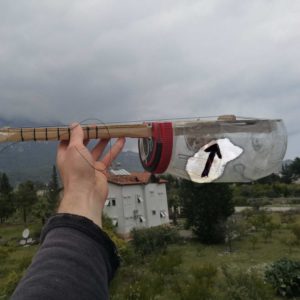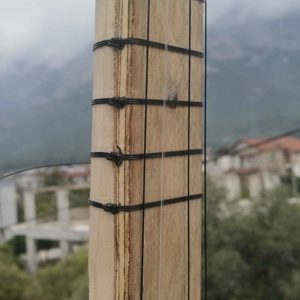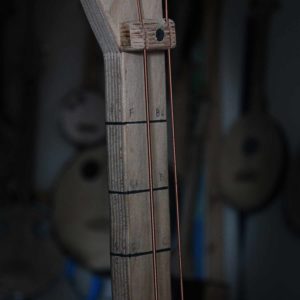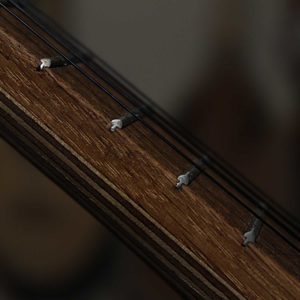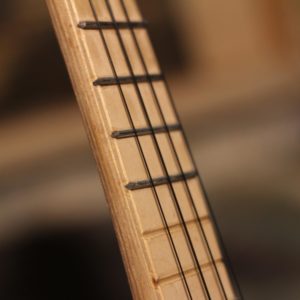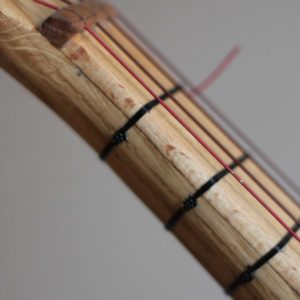The neck
„Standard“ neck
The classical neck, glued in the first few centimetres of the body top.
- Works well with wooden bodies or other stable body forms
- Not compatible with many weaker bodies, because the tension of the strings is pulling directly over the body.
Going through neck
This neck doesn’t stop in the body, but goes through it until you can attach it on the bottom of the body.
- The only method for unstable and weak bodies (like paper mache or thin metal cans), because the tension of the strings stays on the neck and doesn’t affect the body at all.
- If you want a centred sound hole, the neck is going to be visible.
The fretboard
The fretboard is a ~5mm – 10mm thick wooden plate, which is glued to the neck. To calculate the position of the frets on the fretboard you can use this fretcalculator:
Fretboard or no fretboard?
- Just in case you fucked it up, to set the fret wire precisely, you don’t have to throw the whole Instrument. Just do a new fretboard.
- Depending on your construction, it might be good to add some extra height to your neck, so the strings have also a bit more space to the top of the body itself
- Can look sexy, if you have different wood colours
- If you wanna play 24/7, you can consider choosing a harder wood as fret board, which is a bit more durable… but this should be a minor consideration for most cases ;p
- More work and more material…
The frets
Fretless
In this case, there are no frets at all. You either need to press the strings precisely on the right position, like it’s done on for example a violin, or you use a bottleneck and an open tuning to have an American styled slide guitar.
- By far the easiest option to build
- Harder to play, as there are obviously no frets to help you
Frets with fret wire
This is the standard for all guitars & ukuleles. Fret wire has a T-shape so, you just need to saw a thin line on the fret board and press the fret wire in. That’s it. Even glue is optional.
- As they are mechanically stuck to the fret, they are holding very well
- High playing comfort
- No nice way to correct them, once they are attached. So you need to work precisely from the beginning on!
As professional fret wire is not the cheapest of all options, the thought is coming up, why not using nails or wire.
Well, it’s possible, but…
- Free – or at least very cheap
- Hard to attach. Even with good glue, the risk that they disappear in time is quite high.
- Harder to reach a good level of precision, as they are not attachable that easily
Frets with string
This style is widely used in Turkish/ Arabic/ … instruments. But it’s generally a good concept also for guitars & ukes.
Fishing line or nylon string or similar plastic strings are working well. Important is, that the material is as hard as possible. So don’t take wool. 😉
0,4mm – 0,5mm is a good thickness
- Adjustable! No stress, if the fret doesn’t sit on the right position. You can still move or replace it!
- The move ability makes the fretboard optional as well!
- Cheap and easy to do, but still professional
- Lower playing comfort, as your hand always comes along the fret strings while sliding on the fretboard
Cable tie frets
~1mm cable ties are probably the easiest option for making frets.
- Can be easily corrected, so that the fret board can be omitted as well.
- Extremely quick and easy to attach.
- Less ergonomic, as you will always feel them while sliding with your hand on the neck.
